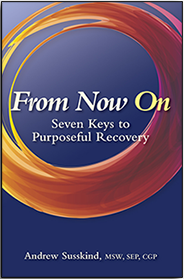The Art of Relaxation
Meditation is a time-tested anti-anxiety strategy that dates back thousands of years. My story with it is like that of many others who have given it a try. For many years, I dabbled in various approaches to meditation, but for whatever reason it never turned into a consistent practice. After many failed attempts, I finally decided to take a more structured approach. I enrolled in a Mindfulness-Based Stress Reduction (MBSR) class, which met every Sunday night for eight weeks.
This time it stuck. Maybe I was finally ready to integrate meditation into my life. Maybe the financial investment in the course was the catalyst for me to get the best bang for my buck. Maybe the structure, accountability, and mentoring made the difference. It’s always about timing, and in my case it required the commitment of enrolling in a class. What I learned and continue to learn is that meditation is one of the best anti-anxiety medications on the market, and it doesn’t even require a prescription. When your anxiety is down, your emotional sobriety is up, so I encourage you to experiment with meditation of any kind—whatever resonates is the version that’s right for you.
There’s no right or wrong way to go about it. Nobody will scrutinize your meditation practice. Try to have fun and leave your perfectionism at the door. As I continue to refine my morning ritual, I find that it’s an essential tone-setter for my day. Each morning I stumble toward my cushion (sometimes in the dark or early dawn), and my dog Bowie follows me into my meditation corner. It’s become an intimate ritual—not always easy or peaceful—but a space we’ve carved out just for us. As a matter of fact, when I begin to meditate, I always notice restlessness in my mind and body, and I’ve come to understand that part of the process is to settle down and be patient with myself. An absolute blank mind is not realistic, but coming back to your breath and achieving moments of a quieter mind is still therapeutic. As a recovering perfectionist, I find it’s another priceless exercise in imperfection.
As to the specific meditative practice, there are limitless ways to develop and sustain the routine. It requires some trial and error. Here is my version of a morning tone-setter:
- Sit quietly on a cushion in a designated space in your home. It can be any time of day, but try to find a consistent time if possible.
- Read a page or two from an inspirational book, a meaningful prayer, or an affirmation that resonates with you.
- Sit quietly for ten to fifteen minutes. When your mind wanders, keep coming back to your breath Don’t focus too much on the amount of time you meditate. Start slowly and increase it over time.
- Congratulate yourself for your commitment to a morning ritual and express gratitude for your healing space.
Don’t be rigid with these suggested steps. Do what works best for you and know that it will require patience as well as discipline. Now that I wake up fifteen minutes earlier each day to meditate, I do lose a bit of sleep. But it’s worth it to me because I’ve set a positive tone, and the rest of my day seems to go smoother as a result.
Most of us are familiar with the classic image of the Buddha sitting cross-legged with closed eyes. This position may or may not work for you. You may find that sitting on a cushion or a chair with proper back support feels better. Running, swimming, and walking can also be meditative movements. Don’t confine yourself to meditating at home in the wee hours of the morning, either. Experiment and find your natural rhythm.
Dr. Jon Kabat-Zinn, psychologist and founding Executive Director of the Center for Mindfulness at the University of Massachusetts Medical School, has shown that mindfulness meditation regulates the nervous system and helps you build resiliency and buoyancy—a powerful rival for stress and anxiety.
Our culture encourages us to achieve our goals as quickly as possible, so allowing a process to unfold at its own pace can feel revolutionary. Mindfulness also allows you to get to know yourself more fully. It’s one thing to understand these concepts on an intellectual level, but it’s another thing to put them into practice.




